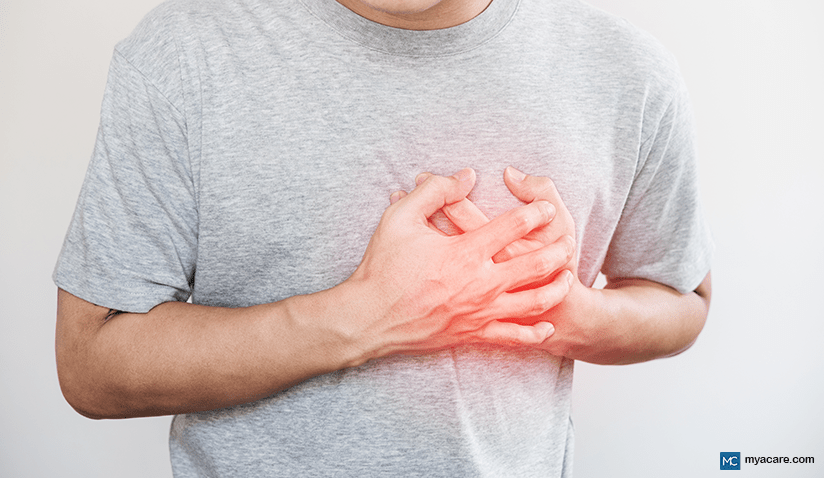COMMON TYPES OF NEURO-PSYCHOLOGICAL DISORDERS - PART 8 - EMOTIONAL AND MOOD DISORDERS

The following article covers part 8 of an overview of neurological diseases.
Emotional and Mood Disorders
Mood disorders (sometimes referred to as affective disorders) are characterized by pervasive emotional states of being that are out of context with daily events.
Generally speaking, there are only really two types of mood disorders: those consisting predominantly of overly euphoric states and those consisting of depressive states. Some keep an individual locked in one end of the spectrum irrespective of their circumstances such as persistent depressive disorder, while others cycle between the two, such as bipolar disorders.
Causes of mood disorders are varied, but typically result in affecting specific brain areas; the main ones being the amygdala and the orbitofrontal cortex. As a generalization, imbalances in dopamine and serotonin in these brain areas are known to be main contributing factors.[1]
Depression and Related Disorders
Depression constitutes of a range of various disorders and can also be a symptom of other diseases as well as a consequence of naturally stressful life events. A lot of people will experience a minor form of depression at some point in their lives due to such events; however this is not the same as having a depressive disorder. Clinical depression is different to everyday sadness in that the person tends to lose the ability to feel any emotion, especially positive emotions.
Serotonin increases and dopamine deficits as well as increased levels of cortisol (the stress hormone) are believed to be common features of depressive states of being.
Depressive disorders are variations on the same theme and can manifest in episodes that result in clinical depression. Examples of depressive disorders include[2]:
- Major depressive disorder is one such condition in which episodes of clinical depression ensue with bouts of intense feelings of negativity, anxiety, guilt, and hopelessness.
- Persistent depressive disorder or dysthymia is similar to major depressive disorder, however the intensity is less and the disorder is drawn out over many years or can be lifelong.
- Double Depression is when someone presents with both persistent and major depressive disorders, having both episodic and progressive states of depression.
- Seasonal Affective Disorder (SAD) is an episodic form of depression that tends to only kick in during Winter months or during a certain season of the year.
- Atypical Depression is a lesser form of depressive disorder in which the person still experiences happy or pleasurable states of being in response to appropriate stimuli. For the rest of the time, this person is depressed.
- Melancholic Depression is the most severe subtype of major depressive disorder, characterized by debilitating depressive symptoms. Insomnia, worsening of symptoms in the morning, being unable to move due to being in a depressive state and weight loss are common symptoms.[3]
- Postpartum Depression is the depression that is commonly known to affect mothers who have just given birth. Many cases spontaneously resolve with time, however some mothers experience complications that are lifelong.
- Disruptive Mood Dysregulation Disorder is characterized by severe, chronic irritability in children, resulting in temper tantrums that are inappropriate for the child’s age. Previously this was classified as a type of child bipolar disorder, but has since been re-classified under the depressive category.
- Premenstrual Dysphoric Disorder is a type of mood disorder that affects some women in the week prior to menstruating. It includes excessive irritability, anxiety, severe mood swings and depression which typically resolve when menstruation begins.
Chronic medical conditions and substance abuse disorders are also common causes of depression and are taken into consideration when making a diagnosis.
It ought to be noted that grief is a natural cause for depression that tends to resolve within a matter of months to years after onset. Complex grief cases tend to take longer and may result in lifelong depression related to a traumatic event or incident such as watching a loved one commit suicide. Bereavement used to be exemplary in the diagnosis of major depressive disorder; however in recent publications, it is now included as a valid cause for diagnosis in spite of being reversible in most cases given appropriate time.
Symptoms
Depressive disorders are diagnosed in accordance with the following symptoms:
- Persistent sadness
- Feelings of guilt
- Decreased energy levels
- Lowered concentration
- Reduced appetite
- Decreased participation in pleasurable activities, sometimes accompanied by an impaired ability to experience pleasure
- An increase or decrease in psychomotor activity
- Recurring self-deprecating tendencies, such as acts of self-harm, suicidal ideation or negative thoughts of the self
- Insomnia
Major Depressive Disorder requires that 5 of the 9 above symptoms are experienced for longer than 2 weeks. The other types meet similar criteria, either in episodes, for longer periods of time or under specific circumstances.
Depression is sometimes referred to as a form of pseudo-dementia[4] due to the way in which it can contribute towards memory loss, inability to focus properly, difficulty finding the right words and problems with initiation.
Bipolar Disorders (Manic Depression)
Bipolar disorders constitute a spectrum in which patients tend to experience episodes of extreme euphoria, referred to as mania or manic episodes. Another term used to describe bipolar disorders would be manic depression, as those with the disorders tend to cycle from a state of excessive “happiness” or manic activity to that of severe depression.
Excessive levels of dopamine in combination with deficits in serotonin are believed to contribute towards episodes of mania, as do imbalances in norepinephrine, cortisol and other stress hormones.
- Bipolar I presents with the most severe manifestations of mania. Manic episodes tend to last a minimum of a week for those with type I Bipolar and sometimes may even result in hospitalization for the person. To be diagnosed with type I, three or more of the symptoms outlined below need to be present during a manic episode. At least one full blown episode of mania needs to have occurred to be diagnosed with this type of bipolar disorder. This type shares a genetic overlap with Schizophrenic disorders.
- Bipolar II shares commonality with Bipolar I; however manic episodes are fewer with a lesser intensity and duration (4 days or more), while depressive episodes are more prevalent. To be diagnosed with Bipolar II, the person needs to have experienced at least one episode of hypomania.[5] This type shares a genetic overlap with major depressive disorder.
- Cyclothymic Disorder is a lesser form of bipolar disorder in which the person cycles between episodes of sub-clinical mania and sub-clinical depression. Those with cyclothymia are described as having bipolar traits or temperaments. Their episodes are still acute enough to negatively affect their occupational and social lives. Adults need to have experienced this cycling for a minimum of 2 years, while children are diagnosed after having experienced it for a year.
- Hypomania is the mildest form of bipolar disorder. Episodes of a sub-threshold manic state, lasting at least 4 days, without having any impact on the person’s occupation or social life describes hypomanic symptoms.
In some publications, cyclothymia and hypomania are considered as initial phases that foreshadow more intensive bipolar episodes in type I and II disorders.[6]
Bipolar disorders are frequently confused for other disorders including ADHD, borderline personality disorder, schizophrenia, and severe anxiety disorders, such as PTSD.
Symptoms
Bipolar disorder tends to be diagnosed during the person’s manic phase and can easily be mistaken for major depressive disorder in between where episodes of depression are experienced by the patient.
Manic episodes present with persistent symptoms including:
- Extremely elevated or extremely irritable/agitated mood, often accompanied by hyperactivity
- Increased goal-directed activity
- Insomia or sleep deprivation, particularly due to being overly excited or motivated
- A heightened sense of self (grandiosity) often accompanied by delusional thinking that mirrors the emotional state
- Being easily distracted
- Rushed, frantic or pressured speech
- Reckless or risk-taking behaviors, coupled with impaired judgement and impulsivity
- Racing thoughts
To be diagnosed with bipolar disorder, one needs to have either an elevated mood and three additional symptoms listed above; or an irritable mood and four additional symptoms. These symptoms will only present during episodes of mania and are commonly highlighted by long periods of depression in between.
Risk Factors
Risk factors for mood disorders include:
- Stressful life events including death, divorce, trauma, and abuse, particularly if they occurred at developmental ages in childhood
- Personality disorders and other mental disorders
- Chronic medical conditions
- Sleep deprivation
- Chronic neuroinflammation
- Lack of social support or social isolation
Depression and other mood disorders are more common in females than in males. Furthermore, the risk of depression is increased in pregnant and breast-feeding women.
Treatment Options
The first option for those with a depressive disorder would be an antidepressant. Generally, drugs that work with serotonin are employed, of which there are many options. Extreme cases of major depressive disorder do not respond to conventional treatment options, as observed in those with melancholia. In these resistant cases, vagal nerve stimulation, transcranial magnetic stimulation, electroconvulsive therapy, antipsychotics and other therapies may be used.
For seasonal affective disorder, phototherapy is often employed, particularly for patients who live in areas that get little sunlight.
For those with bipolar disorders, Lithium[7] (a sedative mood stabilizer) and antipsychotics are usually employed for treating mania, sometimes in combination with a stronger sedative. Antidepressants are used for treating intermittent episodes of bipolar depression; however, it has been noted that antidepressants destabilize the mood of those with bipolar disorders.
Psychotherapy is an important component of treating any mood disorder as it equips the patient to better deal with depressive states and better manage depressive ideation. Mindfulness based interventions appear to work for some individuals in controlling extreme moods. Behavioral therapies that promote positive actions have shown promise in abating the negative symptoms of mood disorders.
Regular exercise, cessation of smoking and other abusive substances, and partaking of a healthy diet plan has also been shown to help those with mood disorders.[8]
To search for the best healthcare providers worldwide, please use the Mya Care search engine.
Source:
- [1] https://www.ncbi.nlm.nih.gov/books/NBK558911/
- [2] https://www.mayoclinic.org/diseases-conditions/mood-disorders/symptoms-causes/syc-20365057
- [3] https://www.ncbi.nlm.nih.gov/pmc/articles/PMC3482206/
- [4] https://www.ncbi.nlm.nih.gov/pmc/articles/PMC2536654/
- [5] https://www.ncbi.nlm.nih.gov/books/NBK558998/
- [6] https://www.ncbi.nlm.nih.gov/books/NBK558911/
- [7] https://pubmed.ncbi.nlm.nih.gov/33278937/
- [8] https://www.ncbi.nlm.nih.gov/books/NBK558911/
Disclaimer: Please note that Mya Care does not provide medical advice, diagnosis, or treatment. The information provided is not intended to replace the care or advice of a qualified health care professional. The views expressed are personal views of the author and do not necessarily reflect the opinion of Mya Care. Always consult your doctor for all diagnoses, treatments, and cures for any diseases or conditions, as well as before changing your health care regimen. Do not reproduce, copy, reformat, publish, distribute, upload, post, transmit, transfer in any manner or sell any of the materials in this blog without prior written permission from myacare.com.



